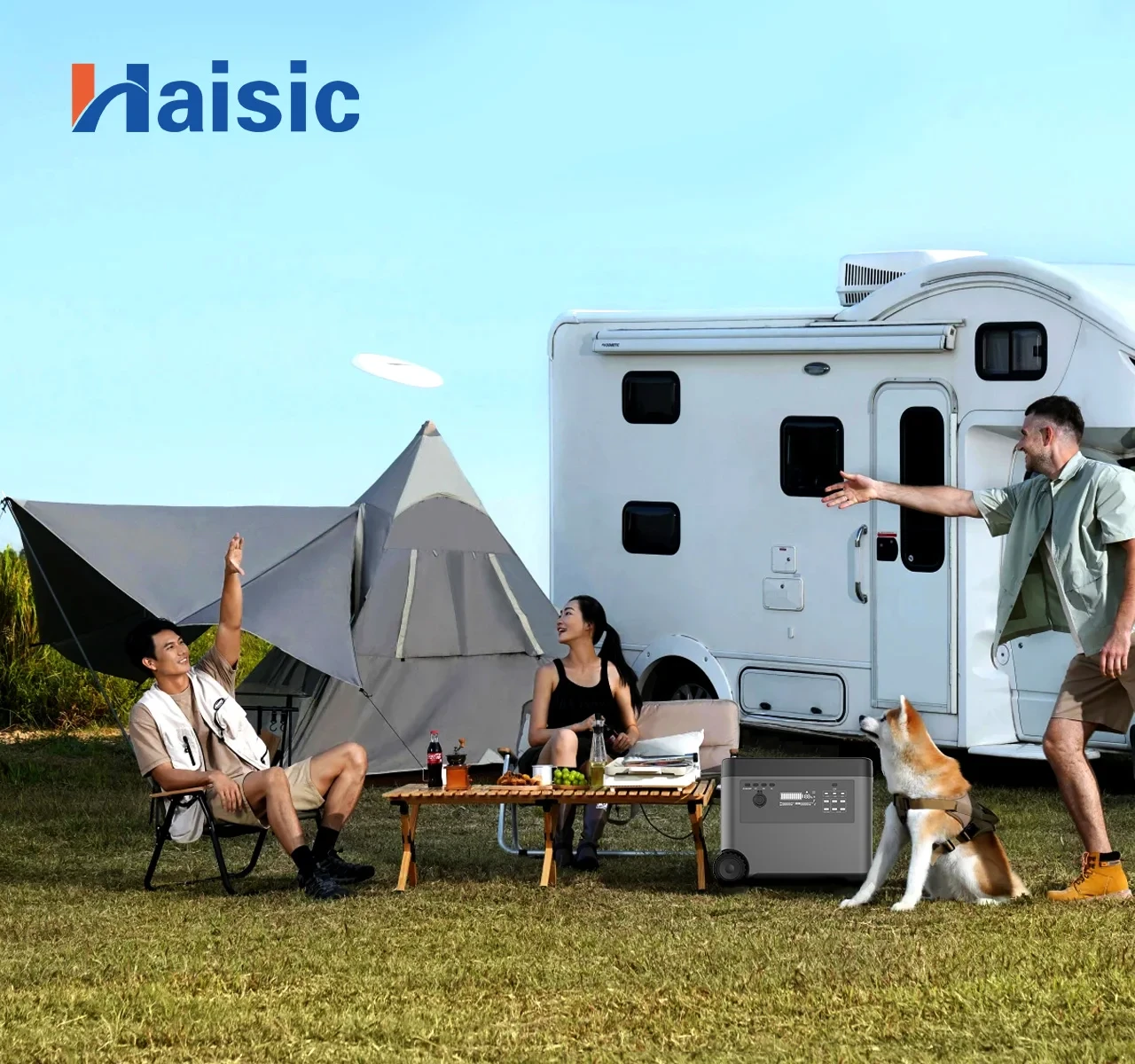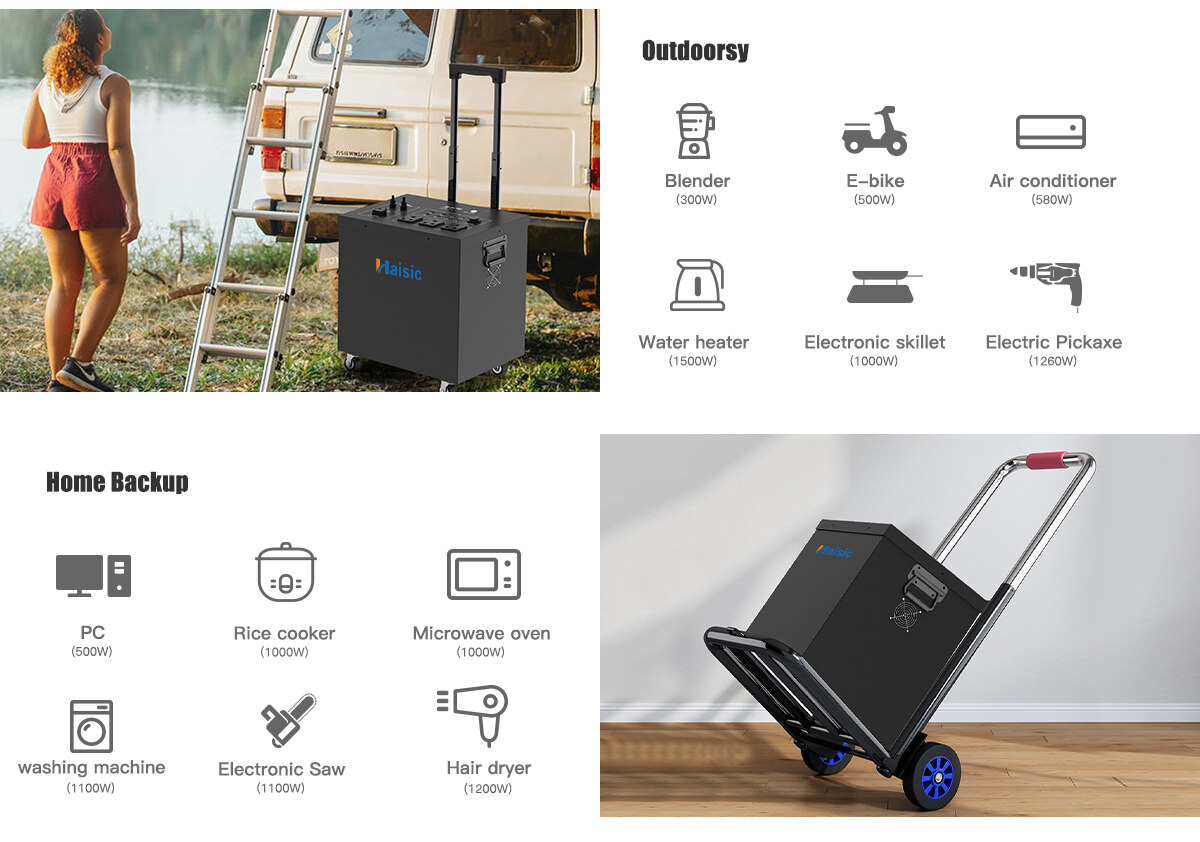Email format error
Email cannot be empty
Email already exists
6-20 characters(letters plus numbers only)
The password is inconsistent
Email format error
Email cannot be empty
Email does not exist
6-20 characters(letters plus numbers only)
The password is inconsistent


There's nothing quite like the thrill of heading out into the great outdoors, where the stress of daily life melts away and you're left with the simplicity of nature. Whether it's a weekend getaway in the mountains or an extended camping trip in a remote location, being in nature has a unique way of recharging your mind and spirit. But let's be honest—our modern lives are deeply intertwined with technology. From smartphones and cameras to portable refrigerators and lights, our outdoor adventures often require a reliable power source. This is where a camping power station comes into play.
If you’ve ever struggled with keeping your devices charged while camping, or if you've had to cut your trip short because your gear ran out of juice, a camping power station could be the game-changer you need. In this blog post, we'll explore what a camping power station is, how it works, and why it's an essential piece of gear for modern campers.
A camping power station is a portable, rechargeable battery-powered device designed to supply electricity for your electronic devices and small appliances while you're away from conventional power sources. Unlike traditional generators that rely on fuel and produce noise and emissions, camping power stations are clean, quiet, and easy to use, making them ideal for eco-conscious campers.
Typically, these devices come with multiple types of outlets, including AC (alternating current) outlets, DC (direct current) ports, USB ports, and even specialized outputs for devices like CPAP machines or mini-fridges. With a camping power station, you can keep your smartphone, tablet, camera, lights, and other essential gadgets charged and operational throughout your trip.
Camping power stations operate on rechargeable batteries, most commonly lithium-ion or lithium-polymer, which are known for their high energy density and long lifespan. Here’s a simplified breakdown of how they work:
Charging: Before heading out, you charge the power station using a wall outlet, a car charger, or even a solar panel (if the power station supports solar charging). Charging times can vary depending on the method and the capacity of the power station.
Storing Energy: Once charged, the power station stores energy in its internal battery. The stored energy is then available for you to use whenever you need it.
Powering Devices: When you connect your devices to the power station, it converts the stored energy into the appropriate current (AC or DC) to power your gadgets.
The portability of these power stations makes them incredibly versatile, allowing you to bring the comforts of home—like lighting, cooking appliances, and entertainment—into the wild without compromising your connection to nature.
One of the main reasons to invest in a camping power station is the ability to keep all your essential gear powered. Whether you're going off-grid for a few days or just spending a night under the stars, having a reliable source of power ensures that your trip goes smoothly. Here's how a camping power station can enhance your outdoor experience:
Lighting: Portable lights and lanterns are vital for safety and comfort during your camping trip. A power station ensures you never have to fumble in the dark.
Communication: Keeping your phone charged is essential, not just for capturing memories but also for staying in touch in case of emergencies.
Cooking: Many camping power stations can power small appliances like portable stoves, electric grills, or even blenders, giving you the luxury of hot meals and fresh coffee.
Entertainment: From charging your camera to powering a portable speaker, a power station allows you to bring entertainment to the campsite without worrying about battery life.
Unlike traditional gas-powered generators, camping power stations are environmentally friendly. They produce zero emissions, which is crucial when you're trying to minimize your environmental impact. Additionally, because they operate silently, they won't disturb the peace of your natural surroundings or annoy your fellow campers.
The convenience of having a portable power station cannot be overstated. These devices are designed to be lightweight and easy to carry, with most models featuring handles or wheels for added portability. Their versatility means that they can be used in various scenarios—camping, road trips, tailgating, or even as a backup power source during home power outages.
One of the most important factors to consider when choosing a camping power station is its battery capacity, typically measured in watt-hours (Wh). This indicates how much energy the power station can store and how long it can power your devices. If you plan to power energy-intensive devices like a portable refrigerator or electric stove, you’ll need a power station with a higher capacity.
The variety and number of ports on a camping power station determine how many devices you can charge simultaneously. Common ports include:
Some advanced models also include USB-C ports, which support faster charging for compatible devices.
Consider the different ways the power station can be recharged. The most common methods include:
Since camping power stations are meant to be used outdoors, it's important to choose a model that is rugged and durable. Look for features like water resistance, dustproofing, and shock absorption to ensure that your power station can withstand the elements.
A good camping power station will have an easy-to-read display that shows important information like battery level, input/output wattage, and charging status. User-friendly controls also make it easier to manage your power usage and switch between different outputs.
Before your trip, make a list of all the devices and appliances you plan to bring and estimate their power consumption. This will help you determine how much power you'll need and whether your chosen power station has enough capacity to meet your needs.
To maximize the efficiency of your power station, try to charge your devices during the day when solar recharging is available (if you're using solar panels). Additionally, prioritize charging your most essential devices first to ensure they have enough power.
While camping power stations require minimal maintenance, it's important to keep them in good condition. Store your power station in a cool, dry place when not in use, and avoid exposing it to extreme temperatures or moisture. Periodically check the battery health and recharge it fully every few months if it's not being used.
Camping is all about disconnecting from the hustle and bustle of everyday life, but that doesn’t mean you have to sacrifice comfort and convenience. A camping power station offers the perfect balance between enjoying the great outdoors and staying connected to the modern world. With the ability to power your essential gear, reduce your environmental impact, and provide peace of mind, a camping power station is a must-have for any outdoor enthusiast.
Whether you're a seasoned camper or a newbie looking to enhance your outdoor experience, investing in a camping power station will allow you to focus on what truly matters—making memories in nature. So before your next adventure, consider adding this versatile and powerful tool to your camping arsenal.